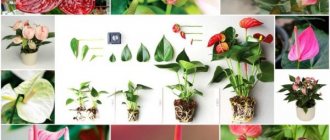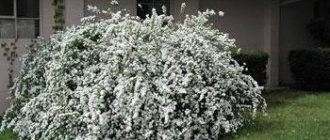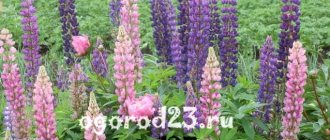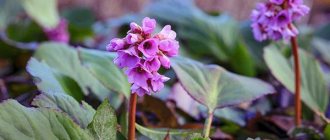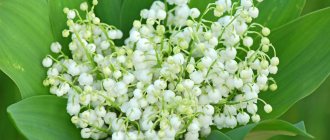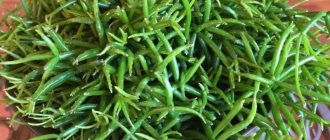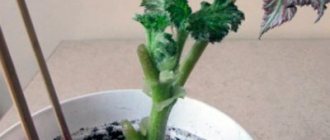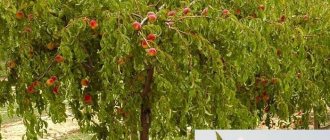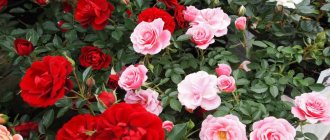History of origin
The Begonia genus has about 1,400 species that can be found in humid subtropical and tropical zones, and more specifically in the forests of South America, the tropics of Asia, Madagascar, China and Sri Lanka. These flowers are known all over the world. They are named after the Frenchman Michel Begon, who became the organizer and sponsor of the expedition to the Antilles.
One of the expedition members, Charles Plumier, described the found plant in detail. In the 18th century, Begonia was brought to the European continent. Over time, more and more new species came to Europe, and breeders began to become interested in them. And already in the 19th century, many varieties of artificially created plants appeared.
On our website you will find a number of articles that provide detailed descriptions and recommendations for growing, propagating and caring for the following plant varieties: Metallic, Mason, Rex, Bolivian, Griffith, Griffon, Sizofolia, Coral, Elatior, Hogweed.
Features of growing begonia flowers
In our climatic conditions, begonia in open ground can only grow in warm weather.
It is mainly grown at home on windowsills, since many varieties are heat-loving plants. Many lovers of begonia also grow it in open flower beds and alpine hills. With the onset of cold weather, it is again placed in houses.
The total number of begonia species is about 1,000, including annuals and perennials. The plant belongs to the genus Begoniaceae, which, according to the shape of the aerial part, can be:
- herbaceous plants;
- semi-shrub;
- low-growing shrubs.
Begonia everblooming is attractive not only for its bush shape. Its variety of bright colors of inflorescences and leaf shapes can amaze any gardener. The sizes of begonias are also surprisingly varied.
The smallest ones can grow up to several centimeters. There are varieties of begonias that reach a height of 3 meters.
Begonia can be decorative-flowering or decorative-deciduous. Due to its popularity, breeders began to develop new hybrid species based on tuberous begonia. After this, large-flowered species began to appear.
Photo
Meet the flower in the photo.
Beneficial and harmful properties of begonia for the home
Begonia leaves contain a large amount of phytoncides. They are also capable of purifying and disinfecting the air. In addition to the fact that the air becomes cleaner, this also has a positive effect on the human body as a whole.
- strengthening the immune system;
- eliminating fatigue;
- saturation with energy and strength.
As for harm, you need to know that some types of begonias are poisonous. Begonia is ever-blooming and its varieties are classified as poisonous.
On the subject: Ever-flowering begonia: care and propagation at home, common varieties.
If its juice gets on the mucous membranes, it can cause burns and irritation; if plant particles enter the esophagus, a feeling of nausea and vomiting may occur. Therefore, pots with such begonias should be placed away from the access of children and pets.
Benefits and harms of begonia
5
(100%)
2
votes
Begonia is a delicate decorative flower. There are several types of this plant. Some of them bloom magnificently, others delight the eye with painted leaves. The plant does not require special conditions to grow; begonia is easy to care for.
This flower is also an excellent air purifier and humidifier. But can begonia be poisonous? What benefits and harm does the plant bring?
In the article we will tell you what medicinal properties the plant has and how to use it for medicinal purposes so that such healing is beneficial.
All parts of the plant contain acids: succinic, ascorbic, and some varieties contain oxalic. The leaves of the plant contain fatty acids (oleic, linoleic).
Reference! The rich chemical composition of begonia is a source of effective treatment. All green parts of the plant are widely used in traditional medicine; pharmaceutical preparations are made from them.
Landing requirements
Replanting a young plant should occur once a year (it is advisable to do this in the spring, but it can also be done after flowering if these dates do not coincide). Adult, mature begonias are replanted after the roots fill the entire flowerpot (this happens approximately every 3-4 years).
Recommended soil composition: sand, peat, humus, leaf and turf soil. The mixture should be loose and breathable. The pot is chosen to be low but wide; the entire container is not filled with soil, but is done as the rhizomes grow.
The transplantation procedure must be carried out the next day after watering. At the same time, do not forget to free the roots from the old soil and place them in a weak solution of potassium permanganate to prevent fungal diseases. Clean the lump of roots from old and diseased ones, and sprinkle the cut areas with grated charcoal.
Please note that in the first 30 days after “moving” to a new pot, begonia requires special attention. In the first month, you need to water the flower every 5-6 days, and even spray it every day. Protect the transplanted plant from direct sunlight.
Some gardeners even recommend putting the flowerpot in a shaded place without drafts for a couple of days, then, of course, returning it to its original place. After 30 days, it will be necessary to water when the top layer of soil dries out. Since the soil will be compacted each time, do not forget to fill it to the desired level.
Experts advise trimming the Fista a little after replanting in order to reduce the area of evaporation and give it a bush-like shape.
Benefits and harms
Every avid gardener strives to transform his home, including growing begonias. Even the most well-kept house, if there are no flowers in it, will have an unsightly appearance. The unique green foliage of begonia will surely make your home truly beautiful and cozy.
Benefits of begonia for humans
Begonia, like many other ornamental plants, has many beneficial properties that have a positive effect on the human body, and its benefits are very great, but not everyone knows about it.
The main useful properties include the following:
- The extract of leaves and stems of this plant will perfectly calm the nervous system;
- Flower tincture helps normalize sleep, relieve stress, improve cerebral circulation;
- An extract from begonia leaves is included as an additional active substance in the formulation of effective means that normalize sleep and strengthen the nervous system;
- Begonia tincture is used by hypertensive patients to effectively, gently and safely lower blood pressure, improve the functioning of the cardiovascular system;
- The active substances phytoncides released into the air by begonias help eliminate such insidious and dangerous pathogenic bacteria as streptococci and staphylococci.
- Keeping this flower in a house or apartment is useful for those people who often suffer from chronic bronchitis, since under its influence the respiratory system is gradually restored;
- The plant takes an active part in purifying the air not only from harmful bacteria, but also from dust emissions.
- Can be a beautiful and bright addition to any interior;
- The long flowering of this flower will delight you with its exquisite appearance.
Important! People who are well aware of the beneficial properties of begonia often plant it at home and use it as an air purifier, especially when placing the flower in rooms where people often smoke. This plant, like a sponge, absorbs all toxic substances from the air.
Harm to humans
Begonia is such a unique plant that can not only successfully treat, but also cause harm to humans.
When preparing medicinal tinctures, decoctions or extracts, it is very important to adhere to the correct recipe for preparing the medicinal product and the recommendations of a specialist. After all, uncontrolled consumption of begonia can even lead to poisoning, even if the begonia varieties are not such.
Let's take a closer look at what harm such a seemingly harmless plant as begonia can cause to humans?
If you do not follow the correct dosage in the recipe, which also involves taking the drug orally, it can lead to severe troubles, including poisoning the body;
If you somehow get poisonous juice from a plant in your eye, you should definitely rinse your eye under running water, as vision problems may occur in the future;
In case of contact with the skin, especially if it is delicate facial skin or affected skin, unbearable itching, burning and, in severe cases, even burns may occur;
Under no circumstances should you eat the leaves, as this may result in severe digestive upset or poisoning.
Attention! It is strictly not recommended to take undiluted begonia juice for treatment, and also apply lotions with juice to an open wound. In addition, fresh, unprocessed leaves cannot be eaten, but flowers and tubers can be eaten, but at the same time observe the correct dosage.
Medicinal properties
Begonia as a remedy is widely used in folk medicine. In addition, its various components are included in the formulation of many healing creams, tinctures and lotions. This flower is often used in the treatment of diseases such as ulcers, burns, and wounds of varying degrees of complexity.
begonia leaves
- Recipe for a remedy against ulcers, burns and wounds:
Dry 200g of fresh, washed begonia leaves and pass through a meat grinder (then thoroughly wash the elements of the meat grinder). Squeeze the resulting puree-shaped mass a little, then strain the resulting juice. Add the same amount of boiled water to the resulting juice. For further use, the solution should be stored in a cool, dry place with a tightly sealed lid. Warm it up a little before using it. The medicine obtained in this way is effectively used as a compress.
- Recipe for stomach ulcers
The tincture is prepared as follows: juice is extracted from begonia leaves; the procedure is identical to the instructions in the first recipe (identical to recipe 1). Then add the same amount of alcohol 50g to the contents. store in a dry, dark place for two weeks, shaking the solution periodically. Strain the resulting mixture through a piece of gauze. Take the tincture in a dosage of ten to fifteen drops, diluted in a small amount of warm drinking water. Close the container tightly and leave for 14 days in a dark place. Strain the resulting mixture. The frequency of taking the drug is three times a day immediately before meals. Continue the treatment course for thirty days. After a short two-week break, the course can be resumed
- Recipe for sprains and bruises
Rinse a freshly picked begonia leaf under running water, dry it a little and apply the back side to problem areas. You can leave the compress on all night. The plant effectively relieves swelling and relieves pain at the site of a bruise or sprain.
In addition, this flower is valuable as an emitter of positive energy.
Signs and superstitions
Regarding flowers, you can often hear information that some plants can be kept in a residential building, while others cannot, since they are capable of creating negative energy around themselves. It also happens, on the contrary, that a certain plant promotes good luck and prosperity. Fiction describes many different beliefs directly related to the flower. There is also information about begonia. But it’s up to you to believe it or not, but sometimes it doesn’t hurt to be informed once again.
Each person has his own energy field, some have more positive energy, while others have more negative energy. And when a person with negative energy comes into a house, its inhabitants begin to feel energetic tension. If you believe popular beliefs, then it is begonia that is capable of suppressing negative energy and neutralizing it, like everything negative. The flower takes away all the negative influences that manifest as indecision and brings peace and harmony to the home.
For people whose activities are related to business, it is good to grow begonia in their office. According to signs, she is able to increase intuition, find a way out of a particular problem and quickly respond to it. In addition, it helps to avoid unprofitable deals or dishonest partners and promotes the development of commercial talent. There is also an opinion that if begonia grows rapidly, then this is a symbol of good luck and success in your endeavors. And when the flower fades, this is a sign of impending losses and illnesses of the household.
Begonia is also popularly called Cupid's assistant. They say that it helps to attract a soul mate. For this purpose, it is important to place the flowerpot in the bedroom. By the way, if begonia suddenly begins to bloom, this may indicate that a new addition to the family is possible.
Care
We have already written above that the red-leaved miracle needs to be watered once a week. But let us clarify that this form of watering is suitable for the summer period; in winter, it is enough to moisten the soil once 10-14 days. Try not to let water directly touch the leaves.
The plant needs high air humidity all year round. To maintain this condition, spray the air around the pot more often or place a container of liquid next to it. In summer, the air temperature should fluctuate between 20-22 degrees above zero. In winter, this figure can decrease to 16 degrees Celsius. But do not allow the air to warm up less than 15 degrees, this will destroy the flower.
Begonia requires a well-lit place; the ideal option would be diffuse rather than direct sunlight. Since they can burn the leaves and deprive them of their brightness and richness. But even with a lack of light, the leaves begin to turn pale. If good lighting cannot be provided, use artificial light.
Fista needs to be fed once every two weeks, and in winter once a month. But during flowering and active growth, increase the frequency of complementary feeding to 3-4 times a month.
To do this, use complex mineral fertilizers, which are diluted with water at room temperature. Bird droppings are also suitable for feeding (500 g diluted in 12 liters of water). Rotted manure will also fertilize well (500 per 5 liters of water).
It is better not to use nitrogen fertilizers : the leaves will become fatter, and flowering will slow down or stop altogether. Gardeners advise grinding banana peels, citrus peels, onion peels, ash, tea leaves and adding these elements to the soil.
During the dormant period, fertilizers should not be used, and watering should become extremely rare. If the Fista drops its leaves at this time, do not worry, just cut off the top of the flower.
It would not be amiss to say that Begonia does not tolerate gas decay products. Therefore, it is better not to place it in the kitchen. The leaves of this plant are quite fragile, so you need to be as careful as possible when transporting them.
How to care
To achieve excellent results in growing a crop, it should be provided with suitable conditions.
Illumination
Begonias require bright light. This is very important for flowering plants. In summer, it is recommended to grow the crop in the shade, as there is a risk of burns on the leaves.
Watering
The plant is considered moisture-loving, but it does not require frequent watering. It is much more important to maintain high air humidity. Otherwise, the tips of the leaves may begin to dry out. In hot weather, the flower requires more abundant watering
But it is important to avoid stagnation of moisture in the roots
To moisten the soil, use water at room temperature, which should sit for at least 24 hours. It is worth moistening the soil when the top layer dries 1.5 centimeters. In winter, the crop needs less frequent and moderate watering. Tuberous species should not be moistened at all.
Fertilizer and feeding
For the normal development of begonia, it should be fed on time. It is recommended to fertilize flowering species during budding. It is worth feeding the crop every 14 days, using complex fertilizer. During the formation of ovaries, the flower requires potassium-phosphorus preparations - Pollen and Bud are suitable.
Products containing nitrogen are used exclusively for decorative deciduous varieties of crops. Otherwise, flowering will not begin.
Transfer
For normal development of the culture, it needs systematic replanting. This should be done in the spring, before the beginning of the growing season. The procedure is carried out when roots appear from the drainage holes.
To do this, it is recommended to remove the flower from the pot and get rid of the remaining substrate. After this, the roots are dipped into a light pink solution of potassium permanganate. Then the roots should be washed with settled water. Inspect them carefully and remove areas with rot. After the roots dry, the culture is moved to a larger container.
Young plants are fairly easy to replant. They tolerate this procedure well. Adult flowers have many fragile leaves. Therefore, plants older than 3 years are divided into several fragments.
Soil requirements
The plant requires planting in nutritious soil. The composition should contain 2 parts of leaf soil, 1 part of black soil and the same amount of peat. Place coarse sand at the bottom of the container. The pot is half filled with leaf soil, then peat and black soil are added.
Storing tubers in winter
Ever-blooming begonia is characterized by an unexpressed dormant period. Tuberous plants require wintering. After flowering has finished, the tubers should be placed in peat or left in a pot. It is worth sharply reducing the number of waterings.
Place the pot with tubers in the basement or other cool place. The temperature should be +10-15 degrees.
Air humidity
The culture requires high humidity. However, you should not spray the flower. If moisture gets on the leaves, there is a risk of brown spots. To avoid dry air, the pot should be placed on an inverted tray.
This structure should be placed in a wider container, moss or expanded clay should be poured into it and periodically moistened. As the liquid evaporates, normal humidity will be maintained.
How to choose the right pot
To ensure normal development of the culture, it is worth choosing the right container for it. An ordinary round pot works well for this purpose.
Plastic
A plastic pot is suitable for begonias
It is important to choose the right soil and ensure good drainage. Avoid overcooling or overheating the container
Ceramics
For proper functioning of begonia roots, it is better to choose ceramic pots. This material does not retain liquid and provides excellent air circulation.
Rest period
In evergreen plants this period is weakly expressed. At the same time, tuberous varieties need a long rest. Since mid-autumn, the leaves have been dying off, so it is worth stopping feeding and reducing the amount of watering. After the ground part has completely died off, the pots should be moved to a dark, cool room.
To give a culture a beautiful appearance, it is necessary to pay attention to the formation of its crown. To do this, pinching the shoots is carried out
The procedure can be performed before flowering begins or after it ends. To do this, you should pinch off the upper growth point of the main stem. This is done by 1-2 centimeters.
Diseases and pests
- Powdery mildew. This is a fungal disease that appears when condensation forms in the rhizome. A white coating covers the leaves and stems, while the leaves lose their shape and dry out, the buds grow but do not open. To combat this disease, ventilate the room well and take care of the lighting in it. And don’t forget to fertilize the plant, and also check the Begonia’s neighbors, they can also carry the fungus.
- Gray rot (some call it monilial burn). This disease is worse than the previous one. Indeed, with such a fungal infection, all parts of Begonia suffer, which can lead to its death. It is important to notice the problem in time and remove the affected areas to prevent the rot from spreading. Treat the remaining healthy parts with one percent Bordeaux mixture. The break between disinfection procedures should be one month.
- In addition to sulfur, root rot can also attack. Signs of its damage are brown or burgundy roots. If this is not detected in a timely manner, the disease will spread to the stems. The only method of control is to get rid of rotting roots. This problem can be avoided by laying a good drainage layer in the pot.
- Due to dust and dirt, mealybugs may appear in the leaf axils. Keeping the flower clean will prevent its occurrence.
- If the leaves are not a rich, bright color, this indicates insufficient lighting. And the dark tips of the leaves signal you about a lack of moisture in the air or soil. If you do not regulate watering and light, Begonia will simply shed its leaves before the onset of the dormant period.
- The last pests on our list are aphids and spider mites. At the initial stage of the lesion, you can cope with a regular soap solution. If the situation becomes more serious, the plant will need to be saved with a fungicide solution.
Description and characteristics of the plant
There are more than a thousand subspecies in the begonia genus. Plants are suitable for planting in flowerpots and in open garden beds. The crop blooms in summer and autumn, and indoor plants bloom almost by the beginning of winter.
Fista grows in different ways:
- like creeping grass;
- in the form of a tall, erect bush;
- like a subshrub.
The table provides a description of the appearance of begonia:
| Root system | branched; fibrous; tuberous |
| Stem | prone to lodging, with nodules; short, erect, knobby |
| Leaf Shape | asymmetrical; leaves can be whole or dissected into several segments, with a serrated or wavy edge |
| Leaf color | in the upper part they are painted in an even green tone, as well as in a variety of tones with geometric patterns, splashes and strokes; at the bottom of the leaves are reddish, brownish or deep purple |
| Flower shape | inflorescences consisting of small, medium or large flowers (simple, double, camellia-shaped) |
| Flower color | plain (pink, red, yellow, orange, white); with frames in various shades. |
Reproduction
Fista propagates in two ways: cuttings and leaves. The most suitable period for propagation is early spring, at which time the plants emerge from dormancy.
Cutting stages:
- Cut off a shoot 6-9 cm long and dip it in a means that promotes better rooting, or simply in water, but then the process of root formation will be a little slower.
After the first roots appear, the cuttings are planted in a pot whose diameter does not exceed 10 cm with moist sandy-peaty soil. Don't forget about the drainage layer!
- Cover with a glass or plastic lid and place the sprout in a well-lit place without direct sunlight.
- After two weeks, feed the mineral complex for the first time, and after 30 days, remove the jar and water the flower abundantly.
Reproduction by leaves has approximately the following sequence:
- The cut leaf is cut along the clearly visible veins on the inside, after which it is laid on the prepared soil. To ensure a tight fit of the leaf area to the soil, it is pressed with small stones.
- Place the container with soil in a warm place. Gradually, roots appear in the cut places, and small seedlings appear on the upper side of the leaf.
Proper home planting by shoots and other methods
There are a huge number of ways to propagate begonias:
- seeds;
- cuttings;
- leaves;
- tubers;
- rhizomes;
- lateral processes (children);
- dividing the bush.
Regardless of the chosen method, you need to remember that planting is best done in the spring, because it is during this period that the young plant has the best chance of successfully rooting. For the first planting, it is better to choose small containers with a diameter of up to 10 cm.
Despite the fact that adult begonias feel better in ceramic pots, a plastic one is quite suitable for a young plant, since in less than a year, if rooting is successful, it will have to be replanted. You need to understand that a young plant is much more fragile than its adult relatives, so it needs to create optimal conditions. This can be done using a polyethylene greenhouse, in which elevated temperature and humidity will be constantly maintained.
Important! Begonias do not tolerate low temperatures well (the minimum permissible value is +15 degrees), but overheating is no less destructive for them. The temperature in the greenhouse should not exceed +28 degrees, otherwise it can cause irreparable harm to the plant.
Application of the plant
| Indication | Preparation | Rules of application |
| Use diluted juice.
| Shelf life – no more than 3 days. Used only for external use: compresses, lotions, douching. Before use, heat in a water bath. |
| Preparation of tincture for oral administration.
| Dilute 10-15 drops of the resulting infusion in 1 tbsp. water and drink 3 times a day 20-30 minutes before meals. The course of treatment is 1 month. |
| Headache, migraine |
| Drink the liquid immediately after preparation in slow but large sips. |
| Otitis and ear pain | Tear off a leaf of the plant, wash it, twist it into a tube and carefully insert it into the ear. | Change the sheet every 2-4 hours. |
| Bruises, sprains | Tear off a begonia leaf, wash it and apply the outer side to the sore spot. | Do the procedure at night. |
The presented recipes, and especially those that involve oral administration, require the approval of a doctor. Self-medication may have the opposite effect than expected.
Contraindications and risks
The main contraindications for starting treatment with begonia are pregnancy and lactation, early childhood and adolescence, individual intolerance and a high tendency to allergies. Also, you should not start treatment during an exacerbation of chronic illnesses or during an epidemic of ARVI or influenza.
Pure begonia juice should not be drunk or applied to open wounds. It is not recommended to eat the leaves, but the flowers and tubers can be eaten, but with extreme caution, following the dosage and medical prescriptions.
Begonia is an amazing house plant. It will effectively clean and humidify the air and neutralize chemical fumes. The green parts are used to treat various pathologies. But begonia can also cause harm. It is forbidden to start treatment without first consulting a doctor.
Publication date: various
Useful properties for home and people
The benefits of growing this plant lie in its cleansing and disinfecting properties. Begonia leaves contain large quantities of phytoncides - biologically active substances that stop the growth and reproduction of bacteria and fungi.
In the room where this decorative beauty stands, the air becomes cleaner and fresher.
And this also affects the human condition:
- general strengthening of the immune system;
- increased performance;
- fight against fatigue;
- ensuring a good mood.
Healthy begonias will clear the air of dust and toxic elements and reduce the content of staphylococcus bacteria. The plant also perfectly neutralizes chemical fumes emanating from synthetic materials and plastic. Because of this property, a pot of begonia is a must-have attribute in children's rooms, bedrooms, and living rooms. We talked about whether it is possible to keep the plant at home in our material.
